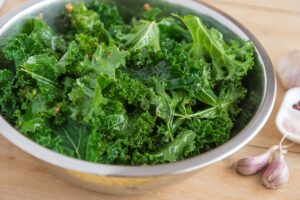Acorn Squash, Kale and Cranberry Salad
go.ncsu.edu/readext?962096
en Español / em Português
El inglés es el idioma de control de esta página. En la medida en que haya algún conflicto entre la traducción al inglés y la traducción, el inglés prevalece.
Al hacer clic en el enlace de traducción se activa un servicio de traducción gratuito para convertir la página al español. Al igual que con cualquier traducción por Internet, la conversión no es sensible al contexto y puede que no traduzca el texto en su significado original. NC State Extension no garantiza la exactitud del texto traducido. Por favor, tenga en cuenta que algunas aplicaciones y/o servicios pueden no funcionar como se espera cuando se traducen.
Português
Inglês é o idioma de controle desta página. Na medida que haja algum conflito entre o texto original em Inglês e a tradução, o Inglês prevalece.
Ao clicar no link de tradução, um serviço gratuito de tradução será ativado para converter a página para o Português. Como em qualquer tradução pela internet, a conversão não é sensivel ao contexto e pode não ocorrer a tradução para o significado orginal. O serviço de Extensão da Carolina do Norte (NC State Extension) não garante a exatidão do texto traduzido. Por favor, observe que algumas funções ou serviços podem não funcionar como esperado após a tradução.
English
English is the controlling language of this page. To the extent there is any conflict between the English text and the translation, English controls.
Clicking on the translation link activates a free translation service to convert the page to Spanish. As with any Internet translation, the conversion is not context-sensitive and may not translate the text to its original meaning. NC State Extension does not guarantee the accuracy of the translated text. Please note that some applications and/or services may not function as expected when translated.
Collapse ▲In last week’s column I offered some tips to make a homemade salad taste more
like a restaurant salad. One of the tips was to add different greens, fruits and
vegetables to offer variety as well as nutrition.
I began searching all of my favorite Extension sights looking for a fall salad that
met those criteria. University of Nebraska Lincoln Extension was the winner with
an Acorn Squash, Cranberry and Kale Salad.
Acorn Squash is considered a winter squash and plentiful this time of year. Winter
squash comes in all shapes, sizes and colors. Common varieties include
pumpkin, acorn squash, butternut squash and spaghetti squash. They are a good
source of vitamin C, which helps to heal wounds and cuts and vitamin A, which
promotes eye health and cell growth. Winter squash also contain potassium which
helps regulate muscle contractions and fiber which promotes regular bowel
function.
When buying winter squash select those that are firm and heavy for their size.
Avoid squash with soft spots or cracks. They can be stored in a cool, dry place.
They usually keep whole for at least one month. Once cut it should be stored
covered in the refrigerator and used within a week.
Kale is a cruciferous vegetable that is part of the mustard plant family. Kale is
high in vitamin C and vitamin A. Kale is also good source of calcium which helps support bones.
When buying fresh kale choose firm leaves that are free from damage or are
brown or yellow colored. When preparing the kale for this salad, wash it carefully
under running water and dry. Remove any large stalks or stems. Chop it into
easy-to-eat sized pieces.
The dressing not only adds flavor but it helps to tenderize the kale. Add the
dressing to the chopped kale and massage it into the kale leaves. Massaging it
also infuses some of the dressing flavors to into the greens. You can do this with
clean hands or use gloves. Massage for about two to three minutes until the
leaves have softened.
Acorn Squash, Cranberry, & Kale Salad
recipe credit to University of Nebraska Lincol
- 1 cup brown rice, uncooked
- 2 cups no salt added vegetable broth
- 1 acorn squash, scrubbed with clean vegetable brush under running water,
cubed - 2 Tablespoons vegetable oil
- ¼ teaspoon salt
- ¼ teaspoon pepper
- 2 Tablespoons balsamic vinegar
- ¼ cup vegetable oil
- 1 Tablespoon maple syrup
- 1 teaspoon mustard (Dijon or other)
- 4 cups kale leaves, gently rubbed under cold running water, chopped
- ½ cup dried cranberries
- ¼ cup pumpkin seeds (select the kind without shells)
- ½ cup crumbled feta cheese (optional)
1. Wash hands with soap and water.
2. Wash and prepare vegetables.
3. Preheat the oven to 375 ⁰F.
4. Cook rice in broth according to package directions.
5. Mix cubed squash with vegetable oil, salt and pepper. Place squash in a
baking dish. Roast squash for 20 minutes or until fork tender. Note: this
could be done in the microwave, but roasting in the oven gives it a more
caramelized flavor.
6. To make the dressing combine vinegar, vegetable oil, maple syrup and
mustard in a small bowl until well combined.
7. Place kale in a large bowl and pour half the dressing over the top.
Massage leaves for about 2-3 minutes until softened. Add cooked rice,
squash, dried cranberries, pumpkin seeds and feta cheese if using. Mix
until combined.
8. Pour desired amount of remaining dressing and mix.
9. Store leftovers in a sealed container in the refrigerator for up to four days.
Makes 8 cups
Nutrition Information: 1 cup serving provides 280 calories, 15 grams fat, 10 mg
cholesterol, 210 mg sodium and 34 g carbohydrates, 2 grams fiber, 8 grams
sugar and 5 grams protein.
Recipe source: University of Nebraska Lincoln Extension
Syracuse is a Family and Consumer Science team member and can be reached at N.C. Cooperative Extension, Brunswick County Center 910-253-2610 or email at
clsyracu@ncsu.edu




